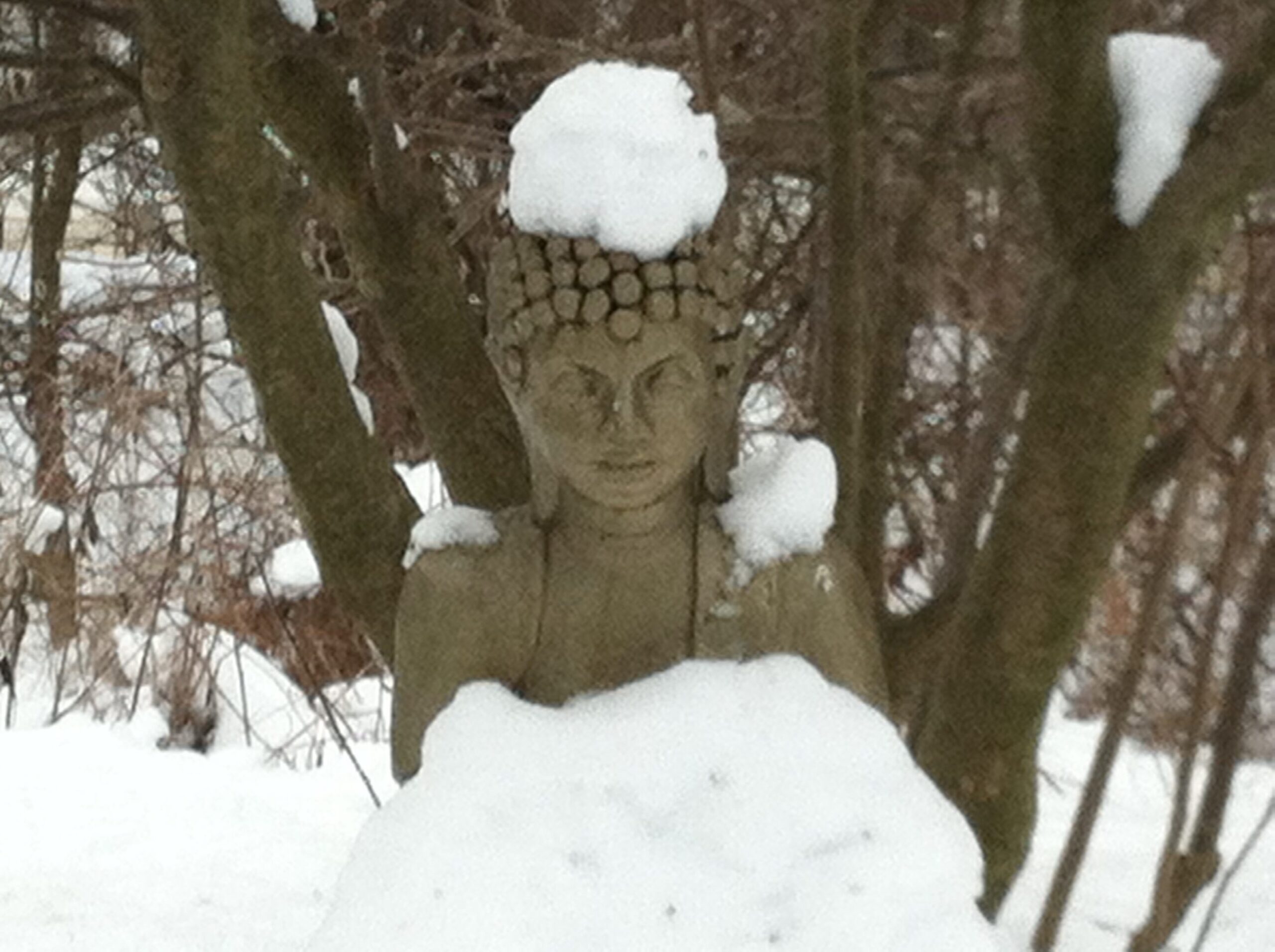Enlightenment seems so…unattainable. Why even sit down to meditate, when the goal is so far away? You can watch a whole movie in two hours, bake a cake in one.
But wait! The Buddha says it can be done; he did it himself with no instruction manual. He trained with teachers along the way, but found their systems ultimately inadequate, so finally he sat down under the Bodhi tree and resolved to just stay there until he got it.
Fortunately for us, he did, and thus we don’t need to reinvent the wheel (that’s not a bad pun, if you happen to be Buddhist). The Buddha left detailed, step-by-step instructions, and we have teachers who have traveled the path themselves to help us follow them. The Vajrayana tradition of Buddhism is designed to accomplish enlightenment in a single lifetime, which is what distinguishes it from the many others that lead to the same goal. Of course, there’s no reason to go for speed…no hurry at all…the cycle of samsara is endless, and we are welcome to wander in it as long as we please. (No disrespect to the many other genuine spiritual traditions…each has its own compelling reason to be, and it’s best to choose the one you are most comfortable with.)
Our shining example of enlightenment in a single lifetime is the great eleventh-century yogi Milarepa: he practiced black magic and committed murders early in his life to exact revenge on relatives who had mistreated him and his mother and sister, thus creating enormous obstacles for himself; yet once he put bone to the stone, as the Tibetans say, he reached the goal with time to spare and left behind a substantial collection of enlightened poetry to inspire and instruct subsequent generations of practitioners.
In case we aren’t prepared to take the word of a saint who passed away a millenium ago, we have the living example of realized teachers within our tradition, who have traveled the path and embody the goal in their every word and action. That’s what inspires most of us to practice: we have clear evidence that the path works.
So then how do we know WE are up to the task? The Buddha taught that all beings, from gods, kings, and queens to earthworms and ghosts, have the same potential, which he called Buddha Nature. What this means is that we are already Buddha, already enlightened, in our basic nature; we just have to wake up and recognize it.
As Tai Situpa puts it in his book Awakening the Sleeping Buddha: “Ultimately, there is no difference between sentient beings who are suffering in samsara and a Buddha who is completely enlightened and free from all limitations. They are the same. It is good to contemplate this paradox.” Or, as he also phrases it in the same chapter, “Every moment we are enlightened, but we don’t recognize it.”
What this seems to mean is that it’s just a matter of looking at the same old things and seeing them differently…clearly…the way they really are. Apparently, this ultimate truth is staring us in the face all the time, we are immersed in it, eating and sleeping and breathing it, it’s like looking for our glasses when they’re on top of our head: a cosmic joke!
On top of that, I think we have a lot of invisible support in our quest: bodhisattvas and other enlightened beings all around us all the time, throwing things in our path, from material objects that appear just when we need them to situations that can help us recognize our patterns and break through them.
So why can’t we see it? Because we are used to not seeing it; we are so entrenched in our habitual patterns of perceiving, thinking and reacting, built up over many lifetimes of thought, word, and deed, that we view everything through a filter, and can’t see clearly what’s right in front of our nose (or on top of our head). We need a teacher to point it out, and then we need to put our own bone to the stone and start chipping away at those habitual perceptions through practice so we can truly see for ourselves.
It all comes down, once again, to meditation. Like putting the key in the ignition, as Lama Norlha Rinpoche has said…someday, we will be able to drive right off!
